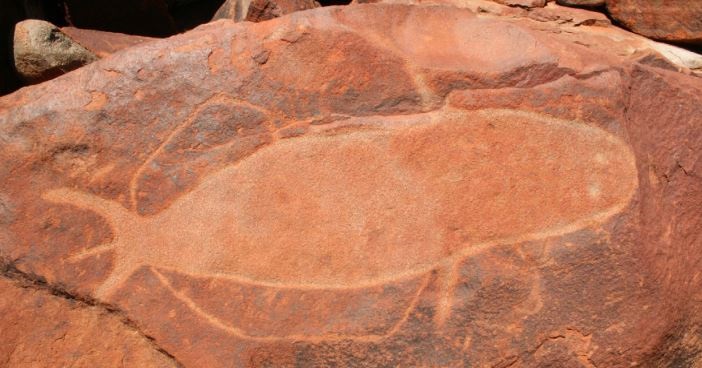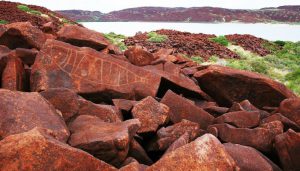
WA has launched a search for experts to help manage and monitor the world’s largest collection of rock art, which is potentially at risk from industry and shipping emissions.
The Murujaga petroglyphs, 1,300 kilometres north of Perth in the Pilbara region of Western Australia, are estimated to date back as far as 30,000 years.
According to traditional belief they were created by spirit beings from the Dreaming who left visual reminders about social codes.
The rock art includes images of extinct mammals as well as birds, fish, snakes, turtles, crabs, crayfish, human figures and abstract designs. They are also a popular tourism drawcard.
However the site shares its location on the Dampier Archipelago with Rio Tinto operations, the North West Shelf Karratha Gas Plant, the Pluto liquified natural gas plant and one of the largest ammonia production sites in the world.
The Port of Dampier is Australia’s second largest bulk export port with total throughput hitting 177.3 million tonnes and 9,600 vessel movements in 2017-18.
A government report on the site released in February noted the preference of Traditional Owners for new industries to be located at the Maitland Strategic Area. But it said “with appropriate management, industry and tourism can successfully co-exist with the cultural heritage and environmental values of the area”.

Significance for traditional owners
Environment minister Stephen Dawson says the Murujuga petroglyphs in the Pilbara region are a vital part of Western Australia’s cultural heritage and huge cultural and spiritual significance for the traditional owners.
He says the government has opened tenders for a scientific monitoring and analysis program to find out if the rock art is being affected as part of the government’s recently released Murujuga Rock Art Strategy.
“Developing a world-best practice monitoring program is the next crucial step to implementing the Murujuga Rock Art Strategy,” he said in a statement.
“It is important we do all we can to protect and preserve this internationally significant rock art.
“This monitoring program will be globally unique – the work is complex and specialised and a multi-disciplinary approach is needed.”
Murujuga Aboriginal Corporation CEO Peter Jeffries said the corporation’s Land and Sea Rangers would work along the successful team to monitor the program.
“We are hopeful this monitoring program will allow Murujuga Land and Sea Unit Rangers to foster new skills and techniques as the true custodians of this sacred place,” he said.
Information for applicants is available on here and will be open until 11am on May 29, 2019.
Comment below to have your say on this story.
If you have a news story or tip-off, get in touch at editorial@governmentnews.com.au.
Sign up to the Government News newsletter.